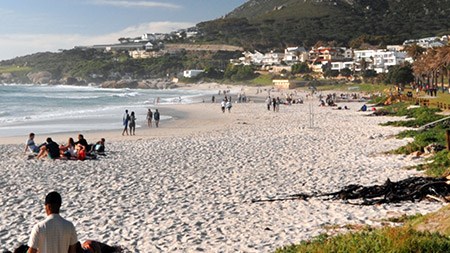A growing number of Cape Town sellers are moving away from the city in search of a more peaceful life.
The new wave of semigration
Urbanisation, an escalating global trend, has seen populations in South African metros swell in recent years, but in Cape Town a parallel emergent trend to move out of the CBD to nearby coastal areas like False Bay has extended to include small towns further away from the city.
Dawn Bloch, Area Specialist in Kirstenhof, Lakeside and Zwaanswyk for Lew Geffen Sotheby’s International Realty, says that although people have been moving to the country for some time, during the past two years, a growing number of her clients have begun to cite this as their reason for selling.
“In 2017, around 15% of my sellers were moving out of Cape Town, predominantly up the west and east coasts and the Winelands, and this number has been steadily rising, fuelled those who are unable to emigrate opting instead to move to smaller towns for a quieter, better quality of life.
“Many are also empty nesters and retirees looking to scale down both their homes and lifestyles, families with young pre-school children and professionals who are able to predominantly work from home or want to open small businesses.
“For most, the primary motivation for this move is a desire to escape the traffic congestion, escalating crime and increasingly regular bouts of unrest of the city for a safer, quieter life.”
Bloch says that popular towns with this new wave of semigrants include Langebaan, Yzerfontein, Caledon, Knysna, Plettenberg Bay and Still Bay, which all offer a tranquil lifestyle as well as an array of outdoor and leisure activities for nature lovers and sports enthusiasts.
According to Johan Truter, Area Specialist and Office Manager for the group in Yzerfontein, there has been a notable increase in enquires from Cape Town and Johannesburg buyers who yearn for the simplicity of West Coast life, and the once tiny permanent population has swelled to around 2000.
“Despite a less than bullish market, we are still inundated with enquiries from Capetonians wishing to invest in a growing town that is not only scenic and authentic but also offers a safe, rural lifestyle only 45 minute from the city along a relatively congestion-free road.”
This is supported by an analysis of Lighstone data which reveals that in 2016 the median house price jumped from R1.5 million to a new high of R2.1m, reaching R2.427m in 2018 and only dipping slightly this year to R2.1m again.
Interestingly, 22 of the 54 houses sold during the past year ending 30 August, changed hands during the last three months of this period.
Truter adds that recent significant growth in the residential sector has spurred commercial growth, with the latest development being a new shopping centre with the anchor tenant, Spar, occupying a space that is double the size of the original store.
In neighbouring Langebaan, the number of registrations and the median house price also spiked in 2015, when a consistent median of around R1.2m increased by 17% to R1.429m, rising steadily to the current price of R1.9m.
Steven Neufeld, Manager Principal in the Plettenberg Bay office, says the town has long been popular with Cape Town buyers, a trend which hasn’t decreased despite the significant market slump of the past three years.
“On average, about 15% of our buyers come from Cape Town and, although it varies a bit from year to year, overall it has remained relatively stable.
“There has, however, been an increase in retirees moving to the area due to two new retirement complexes that were released recently and, with two further proposed retirement complexes in the pipeline, that is likely to continue.”
The Winelands has become increasingly popular with Cape Town buyers in recent years, especially those who seek a more sedate country lifestyle but still need easy access to the CBD and airport and families who are attracted by a better choice of good schools than many small towns.
Chris Cilliers, CEO and Principal of the Winelands branch, says that this sector of the market has remained fairly consistent over the past two years, despite the current market.
“In addition to families, we have been fielding more enquiries from professionals who predominantly work remotely or from home and empty-nesters looking to ease more gently into their golden years.
“Most popular with these buyers are homes in secure estates, where children can safely play outdoors and estates like Boschenmeer, Val de Vie, Pearl Valley and Kleine Parys, which are in close proximity to the N1 and conveniently situated for Paarl schools, are especially sought-after.
“And with recent upgrades and less disruption than on N2, the N1 now offers a very easy commute of just 35 minutes to town during off-peak times.”
Bloch concludes: “The growing migration is undeniably impacting what is already a highly stocked, buyer’s market, but the silver lining for investors that they have been afforded more choice and better value than they’ve enjoyed in many years.
“Astute investors will take advantage of this brief window of opportunity to purchase prime real estate at excellent prices.




